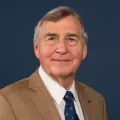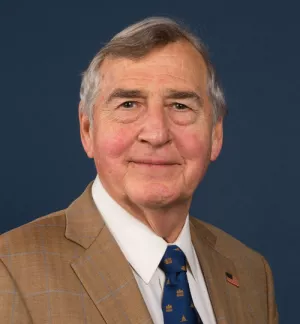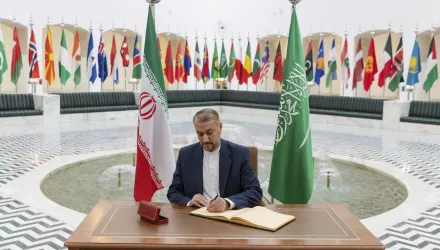As the nuclear mushroom cloud became the spectre that menaced the second half of the 20th century, the prospect of a nuclear terrorist attack emerges as the gravest danger in the 21st. A month after September 11, President George W. Bush came face to face with the threat of nuclear terrorism. At the presidential daily intelligence briefing, the then CIA director George Tenet informed him that an intelligence agent codenamed "Dragonfire" had reported that al-Qaeda possessed a 10-kiloton nuclear bomb. According to Dragonfire, this nuclear weapon, evidently stolen from the Russian arsenal, was in New York.
The CIA had no independent confirmation, but neither did it have reason to dismiss the report. Did the former Soviet stockpiles include a large number of 10-kiloton weapons? Yes. Could the Russian government account for all its nuclear weapons? No. Could al-Qaeda have acquired any of these weapons? Yes. Could it have smuggled a nuclear weapon through US border controls? Yes. Someone quipped that the terrorists could have wrapped the bomb in one of the bales of marijuana routinely smuggled into cities such as New York.
On a normal working day, more than 500,000 people crowd the area within a half-mile radius of Times Square. The explosion of a 10- kiloton device in midtown Manhattan would kill them all instantly. Hundreds of thousands of others would die in the hours thereafter.
Although the Dragonfire report turned out to be a false alarm, the factors that made it plausible then are even more acute today. Tom Ridge, secretary of the department of homeland security, has repeatedly warned of terrorist attacks that "will rival or exceed the attacks on New York and the Pentagon". In his words: "The question is not if, but when." Thomas Kean, chairman of the 9/11 Commission, said: "Everybody feels that they are trying to mount another attack, and everybody feels that, given their ideology, they're doing their best to make it chemical, biological and nuclear because it kills more people and that's their goal."
Sceptics should consider three incandescent facts. First, fewer former Soviet "near-nukes" (lumps of highly enriched uranium and plutonium from which a terrorist could make a nuclear weapon) have been secured in the two years after 9/11 than in the two years prior. Second, more than a weapon's worth of nuclear material remains at risky research reactors in 20 developing countries including Belarus, Ukraine and Uzbekistan, where it is vulnerable to theft and sale to terrorists. Third, while the Bush administration has been consumed by Iraq, North Korea has been reprocessing plutonium for six new nuclear weapons and constructing a production line capable of creating an additional dozen a year.
Nuclear terrorism is preventable. Unlike bioterrorism, this is a finite challenge. As a fact of physics: no highly enriched uranium and plutonium, no fission nuclear explosion, no nuclear terrorism. It is that simple. We have to prevent terrorists from getting their hands on a nuclear weapon or material from which such a weapon could be made. The agenda to achieve this objective is ambitious yet feasible. A serious campaign to prevent nuclear terrorism should apply a doctrine of no loose nukes, no new nascent nukes and no new nuclear-weapons states.
The first requires securing all nuclear weapons and weapons-usable material, on the fastest possible timetable, to a new "gold standard". The US and Russia should develop this standard jointly, act quickly to secure their own materials, and call on the leaders of other states to do the same.
The "no new nascent nukes" approach requires no new national capabilities to enrich uranium or reprocess plutonium, ensuring that all nuclear aspirants halt production of highly enriched uranium and plutonium. This effort should begin with intrusive inspections of suspected nuclear sites as required by the Non- Proliferation Treaty's additional protocol. But two other elements must be added: a prohibition on the production of fissile material and actual enforcement mechanisms. Iran today poses a crucial test to this principle.
"No new nuclear-weapons states" draws a line under the current eight nuclear powers and says unambiguously: "No more." The test case for this principle is North Korea and the strategy would focus solely on dismantling Kim Jong-il's nuclear programme. All of today's great powers, including Britain and the US, share an interest in the proposed campaign outlined above. Each has sufficient reasons to fear nuclear weapons in the hands of terrorists, whether they are al-Qaeda, Chechens or Chinese separatists.
The CIA is warning of another al-Qaeda attack aimed at disrupting the US November 2 elections. If we find ourselves victims of a nuclear-terrorist Hiroshima, history will condemn current leaders for their inaction.
Graham Allison is director of Harvard's Belfer Center for Science and International Affairs. His latest book is "Nuclear Terrorism: The Ultimate Preventable Catastrophe" (Times Books Dollars 24).
Allison, Graham. “Ban Their Bomb.” Financial Times, August 7, 2004




